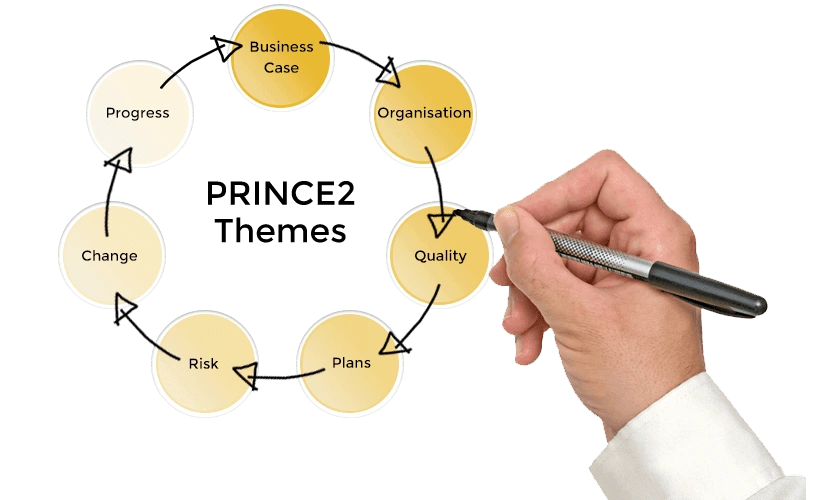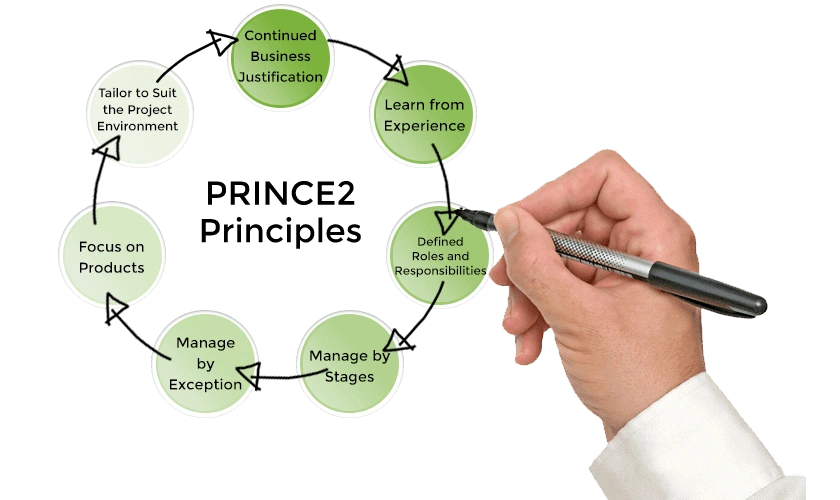Blog - What is PRINCE2?

In 2011 there was a PRINCE2 certification exam being taken every four minutes and in 2012 alone, over 140 000 PRINCE2 exams were written. A very exciting milestone was reached in September 2012 when the total number of PRINCE2 exams taken reached the 1 million mark! This clearly proves that PRINCE2 is the most popular project management certification in the world and understandably so. However, there are still those who ask the question: What is PRINCE2?
PRINCE2 Method is Internationally Recognised
The simplest explanation of PRINCE2 is that it is a structured project management methodology which was first created for the IT industry to create a project environment in which success would be more likely to be achieved. Projects are costly affairs with a lot of risk involved and it was, rightly, thought that if a “recipe” were developed as a framework for all projects, the formula could be followed repeatedly and this would assist in minimising the risks and maximising the potential for successful projects.
When creating the PRINCE2 method, advice and input was requested from a wide range of people who were involved in projects and organisations who undertook projects on a regular basis. These ranged from project teams, Project Managers and project sponsors to training contractors, various consultants and academics. After acknowledging the noticeable difference that using the PRINCE2 method made during its initial usage, the creators and developers also noticed that the generic nature of the method would enable it to be used in sectors other than just Information Technology. With a few tweaks and a little more focus on the tailoring aspect, PRINCE2 made its debut into the world at large.
Today, PRINCE2 has been adopted by a vast range of organisations and business and it continues to enjoy a significant success rate when applied to projects of any kind. Its popularity can easily be seen by that statistics that show that more than 900 000 PRINCE2 certificates have been issued and that the PRINCE2 project management certification exams have been written in 111 countries across the world. Given that there are 196 countries in the world, this means that almost 57% of the world’s countries have joined the PRINCE2 family and this is set to grow as this internationally recognised certification is becoming a prerequisite for most project roles.
Now that we know that the PRINCE2 method is a framework for guiding project procedures towards success, we can delve a little deeper and learn more about the project management methodology itself.
PRINCE2 in 100 Seconds
The Ingredients of the PRINCE2 Method
Firstly, it is important to understand that the PRINCE2 method does not focus on people management and instead places its emphasis on the product that is to be created and, specifically, on the quality requirements of the product. Previous ways of conducting projects often meant that in an effort to finish on time or to save money, the quality of the product was compromised.
Of course, time and cost are very important aspects of any project (including those using the PRINCE2 method) but developing a product that is of poor or unusable quality can actually create a situation where the entire project is deemed to be a failure and this would result in all that time and money being completely wasted. Not all products require the same level of quality but it is crucial that they meet the quality expectations of The Customer and The User – which are just fancy names for the people who are paying for the project and the people who will be using the product that is created by the PRINCE2 project. No one wants to pay for a house that falls down, a piece of software that crashes continuously or a plane engine that fails. And they shouldn’t have to.
To correctly implement the use of the PRINCE2 method it is necessary to gain official training in order to learn how to understand, tailor and apply PRINCE2 to the project that is being undertaken. With roughly 900 accredited PRINCE2 training providers around the world, project management courses are readily available and can be studied by anyone as there are no formal requirements to train as a PRINCE2 Practitioner. PRINCE2 training is split into two project management certifications – PRINCE2 Foundation and PRINCE2 Practitioner. After passing both of the PRINCE2 project management course exams, you will become a Registered PRINCE2 Practitioner and will be capable of applying the method to your first project. As with any other career, experience will be gained from each project that you work on and you will need to continuously deposit into your experience bank to become a truly successful PRINCE2 Project Manager. But with such a reliable method to support you, you are sure to build a great reputation in a relatively short period of time.
To give you a teasing taste of what you can expect when you study a PRINCE2 project management course, here is a brief outline of what PRINCE2 comprises of and what you will learn about when you are training for this leading project management certification.
The 7 PRINCE2 Themes
The 7 PRINCE2 Themes are a group of items/issues that must be monitored and addressed throughout the duration of a PRINCE2 project. Keeping an eye on the Themes during the project is the first step to keeping a PRINCE2 project on track.

Business Case
This is a document that notes the reasons for the project and what benefits are expected to be achieved in order to deem a project successful.
Organisation
This is what defines the roles and responsibilities of all those who are involved in the PRINCE2 project to make sure that everyone knows what they need to do.
Plans
This is to let everyone on the project know what work needs to be done and when it needs to be done by – it also controls and checks the project progress.
Risk
This details how risks to the project should be managed to keep them under control and minimise any negative effects they could have to the PRINCE2 project.
Quality
This describes the quality that is required of the final product and how to meet these required expectations.
Change
Changes are inevitable during any project and the PRINCE2 method uses this theme to manage these changes.
Progress
Monitoring and controlling the progress of a PRINCE2 project is vital to its success and this theme takes care of that aspect.
The 7 PRINCE2 Processes
To break it down into very simple terms, Processes are groups of tasks that need to be completed to achieve goals within the project. There are 7 PRINCE2 Processes and completing these will carry the project to its conclusion and provide a great chance for project success.

Starting Up a Project
This first Process takes a look at the request for the project, the supporting documentation and the potential project itself to decide whether or not the proposed project is viable and should continue past this investigative stage.
Directing a Project
This Process sees the Project Board reviewing the findings of the first stage to determine whether the findings show the project to be viable and then making a decision on whether or not to proceed with the project.
Initiating a Project
If the project is approved, this Process will take a deeper look into the project and expand upon all the aspects to make decisions – it is basically to flesh out everything that was considered during the first stage so that the project can begin on the right footing.
Controlling a Stage
This is to manage each work stage of the project using the method actively to control and monitor each aspect of the work that is being done.
Managing Product Delivery
This Process is exactly what it sounds like – receiving instructions from the Project Manager on what to do, completing this work and delivering the product (or component) to the appropriate party once it is complete.
Managing a Stage Boundary
The final Process during each stage of the project enables the following stage to be planned and for progress to be reported to the Project Board (the bigwigs who call the shots).
Closing a Project
This Process is only used at the very end of a project in order to correctly close the project – this is when the product is handed over, reviews on the project are done and a request to close the project is submitted for approval by the Project Board.
The 7 PRINCE2 Principles
The Principles of PRINCE2 can be considered to be the philosophies behind the method and what has been found to be the keys to project success. These are kept in mind and considered at all time throughout the course of the project to steer it in the right direction – which is customer satisfaction. A satisfied customer defines a successful project.

Continued Business Justification
The goals, requirements and expectations that were set out at the very beginning of the project must continue to remain valid and viable throughout the life of a project.
Learn from Experience
This Principle is true for any aspect of life and deters a project from wasting resources on things that have proven not to work in the past, as well as guides towards practices that do yield results.
Defined Roles and Responsibilities
Clearly defining these from the beginning will save time when an issue arises and prevent the counterproductive syndrome known as “passing the buck”.
Manage by Stages
Dividing a project into stages allows for regular review and assists in making decisions on the way forward by managing portions of the project at a time instead of trying to tackle the entire affair as a single massive entity.
Manage by Exception
This Principle saves time, money and resources by only involving the Project Board at agreed upon intervals (usually the end of each stage) when their input is required for authorisation.
Focus on Products
This might just be the most important Principle of the PRINCE2 method as it reminds everyone involved to keep their eye on the “prize” – which is a quality product that meets the expectations and needs of The Customer.
Tailor to Suit the Project Environment
This Principle is what makes the method adaptable and enables it to be applied to any project.
Project Management is a highly rewarding career – both personally and financially and the method is relatively easy to learn. A good quality project management course in the PRINCE2 method will teach you everything that you need to know about PRINCE2 and how to apply the method to real life project situations. Online courses are gaining popularity as they allow you to study in your own time and at your own pace. They can be completed in a reasonably short period of time so you can earn your PRINCE2 project management certification and begin your new career in almost no time at all. And with professionals constantly being in demand, the job market is wide open with various roles to choose from.
If you are interested in a career in Project Management, it is strongly advised that you consider a PRINCE2 project management certification so that you are practicing a method that is not only popular and sought after across the globe, but also has a reputation for success.
Like this project
Posted Jan 22, 2024
Project Management blog written during my time as an in-house writer for ITonlinelearning, a UK-based online training/e-learning provider.
Likes
0
Views
6





